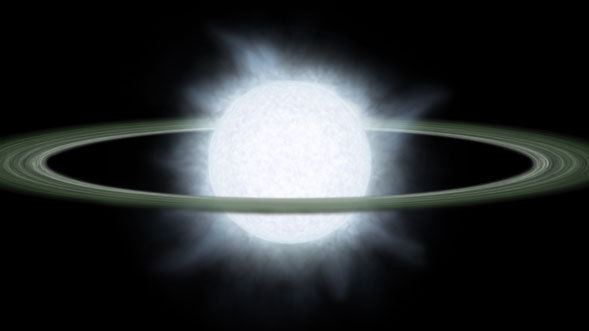
Credit: NASA/JPL-Caltech/B. Sargent (Univ. of Rochester)
Chart • February 8th, 2006 • ssc2006-05a
ssc2006-05a
This graph of data from NASA's Spitzer Space Telescope shows the composition of a monstrous disk of what may be planet-forming dust circling the colossal "hypergiant" star called R 66. The disk contains complex organic molecules called polycyclic aromatic hydrocarbons as well as silicate dust grains. Polycyclic aromatic hydrocarbons can be found on Earth, in dirty barbeques and automobile exhaust pipes, among other places. They are thought to be necessary for primitive life to evolve. Silicates are essentially sand, and, in this case, were found in both their crystalline and non-crystalline, or amorphous, forms.
The data were taken by Spitzer's infrared spectrometer, an instrument that spreads light apart into its basic parts like a prism turning sunlight into a rainbow. In this graph, or spectrum, light from the dust surrounding hypergiant R 66 is plotted according to its component wavelengths (white line). Astronomers determined the contents of this dust by creating a model (gray line) that best fits the observations. The model is the sum total of contributions from various types of dust grains (colored lines).
In addition to R 66, Spitzer made similar observations of a huge disk around the hypergiant star R 126, only this star's disk did not possess crystalline silicate grains. Both disks might represent either an early or late evolutionary phase of the planet-building process. In either scenario, the possible solar systems would be supersized, with host stars that are 30 and 70 times the mass of our sun, respectively.
About the Object
- Name
- R66
- Type
- Star > Circumstellar Material > Disk > Debris
- Distance
- 180,000 Light Years
Color Mapping
| Band | Wavelength | Telescope |
| Infrared | 5.0 µm | Spitzer IRS |
| Infrared | 35.0 µm | Spitzer IRS |






